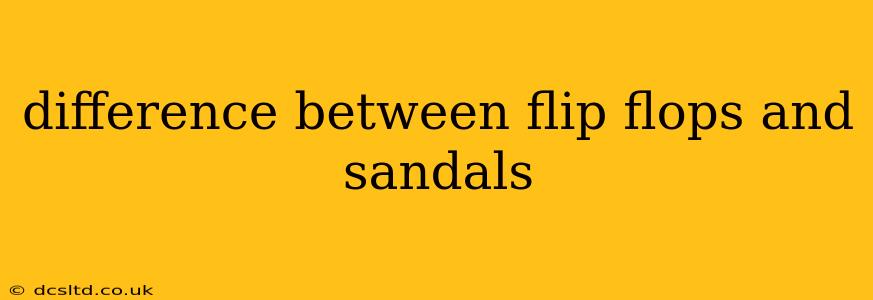The terms "flip-flops" and "sandals" are often used interchangeably, leading to confusion. While both are types of footwear designed for warm weather and casual wear, there are key distinctions between them. Understanding these differences can help you choose the right footwear for the occasion.
What are Flip-Flops?
Flip-flops are a specific type of sandal characterized by a simple, Y-shaped strap that passes between the big toe and the second toe. They are typically made from inexpensive materials like rubber or plastic, and they offer minimal support and protection for the foot. Their defining feature is the ease of slipping them on and off—hence the name, as the straps "flip" and "flop" as you walk.
Key Features of Flip-Flops:
- Simple design: A single strap separating the toes.
- Minimal support: Generally offer little arch support or cushioning.
- Lightweight and inexpensive: Usually made from inexpensive, easily molded materials.
- Easy to wear: Slip-on and slip-off design.
- Limited protection: Offer minimal protection from the elements or rough terrain.
What are Sandals?
Sandals encompass a much broader category of footwear. They are open-toed shoes that secure the foot with straps, but these straps can vary widely in style, number, and complexity. Sandals can be made from various materials, including leather, fabric, rubber, and synthetic materials, and they can range from simple to highly sophisticated designs.
Key Features of Sandals:
- Varied designs: Numerous strap configurations, heel heights, and materials.
- Potential for support: Can offer varying degrees of arch support and cushioning, depending on the design.
- Range of materials: Made from a wide variety of materials, from simple plastics to high-quality leather.
- Various styles: From simple thong sandals to elaborate heeled sandals.
- Increased protection (potentially): Some sandals offer better protection than flip-flops, depending on their design and materials.
What are the Main Differences Between Flip-Flops and Sandals?
The main difference lies in the design and complexity. Flip-flops are a very specific and simple design within the broader category of sandals. Think of it like this: all squares are rectangles, but not all rectangles are squares. All flip-flops are sandals, but not all sandals are flip-flops.
Here's a table summarizing the key differences:
| Feature | Flip-Flops | Sandals |
|---|---|---|
| Design | Simple Y-shaped strap between the toes | Varied strap configurations, heel heights |
| Support | Minimal | Varies widely |
| Materials | Typically rubber or plastic | Leather, fabric, rubber, synthetic materials |
| Cost | Generally inexpensive | Can range from inexpensive to very expensive |
| Protection | Minimal | Varies widely |
What Type of Sandal is Right for Me?
The best choice depends on your needs and the occasion. Flip-flops are ideal for quick trips to the beach or pool, but they lack support for extended walking or strenuous activities. Sandals offer a much wider range of options, from casual everyday wear to more formal or supportive styles suitable for hiking or other activities.
Are there any other types of sandals?
Yes, there are many other types of sandals, each with unique features and purposes. Some examples include:
- Gladiator Sandals: Sandals with multiple straps that wrap around the leg.
- Espadrilles: Sandals with rope soles.
- Slides: Sandals that slip on and off easily, without straps between the toes.
- Platform Sandals: Sandals with a raised sole.
By understanding the differences between flip-flops and the broader category of sandals, you can make a more informed choice when selecting footwear for your needs.
